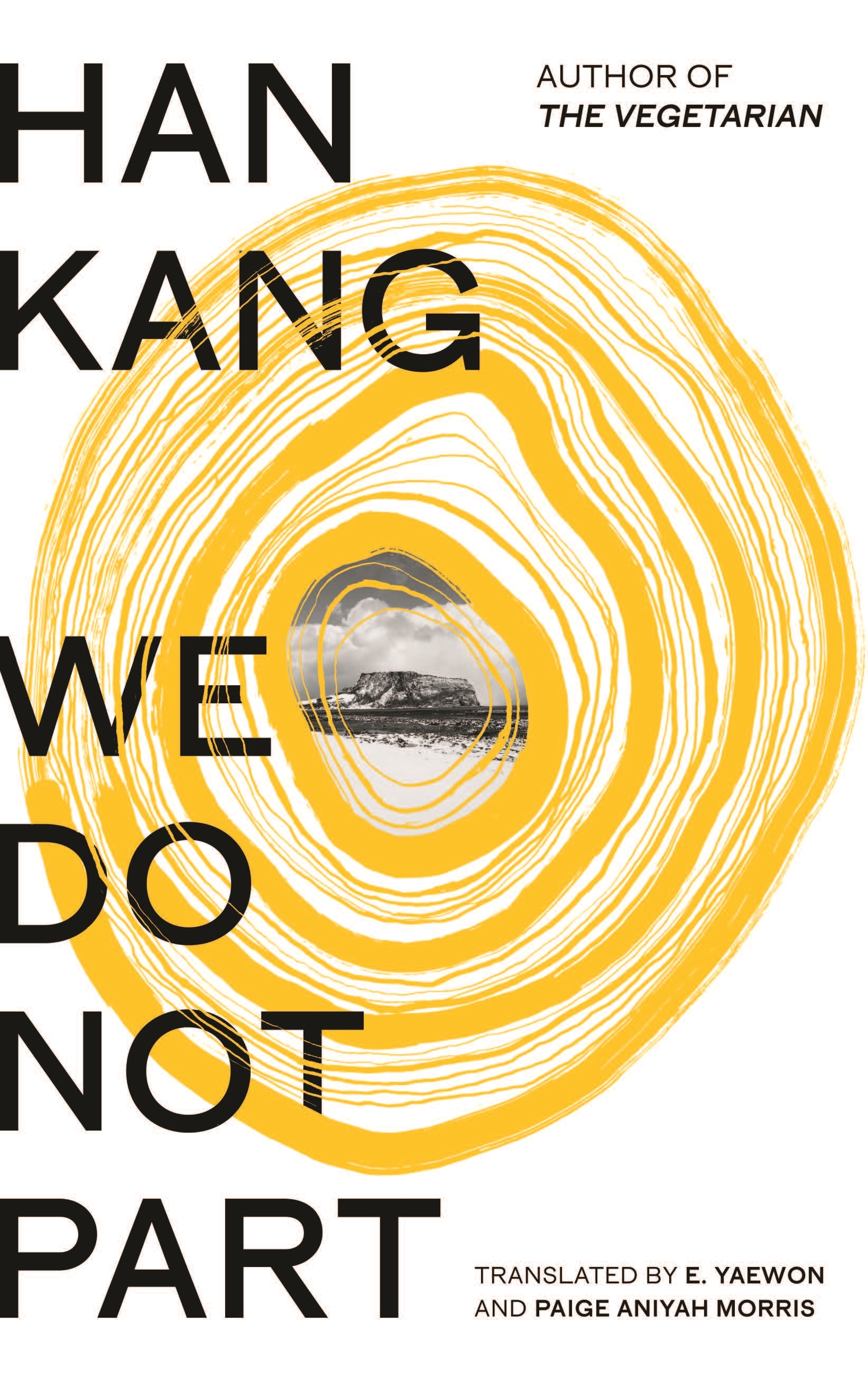
- Free Article: No
- Contents Category: Fiction
- Review Article: Yes
- Article Title: Snow, blackout
- Article Subtitle: A novel about the Korean psyche
- Online Only: No
- Custom Highlight Text:
We Do Not Part, the most recent novel by Nobel laureate Han Kang, is an intriguing synthesis of topics, themes, and structures which have threaded through her writing since the publication of The Vegetarian (2007). As in her earlier work, We Do Not Part blends lyricism and violence to depict the psychological suffering of a female protagonist who strives to comprehend the trauma buried deep in the psyche of Korean society. Kyungha, the primary narrator, is the author of books with a socio-historical foundation and has been afflicted with mental distress – nightmares, migraines, and insomnia – since completing a book about a massacre of Korean civilians by the military government. Readers will identify similarities between Kyungha and Han Kang herself, and with her book Human Acts (2014), the highly acclaimed novel about the 1980 massacre in Gwangju.
- Book 1 Title: We Do Not Part
- Book 1 Biblio: Hamish Hamilton, $39.99 hb, 384 pp
- Book 1 Cover Small (400 x 600):

- Book 1 Cover (800 x 1200):

- Book 1 Readings Link: https://www.readings.com.au/product/9780241600269/we-do-not-part--han-kang--2025--9780241600269#rac:jokjjzr6ly9m
The fictional and the real novel address the same historical trauma for half a century. Following independence from Japanese colonisation, Korea endured civil war, occupation by the US military, and repressive military dictatorships. An anti-communist ideology was spawned in the mid-1940s in the shadow of rivalry between the United States and the Soviet Union over control of the Korean peninsula. This established a state-sanctioned dualistic conception of perpetrators and victims which was used to justify state violence and atrocities against perceived insurgents until the early 1990s. Such acts have been followed by a repressive silence forbidding any mention of them by relatives, historians, or others.
We Do Not Part introduces readers to the first major instance of state-sanctioned violence in the period, the slaughter between 1948 and 1950 of 30,000 Jeju islanders and of 200,000 people on the mainland. Those murdered included men, women, children, and older adults. They return as spectral memories that haunt the present.
Buried trauma often stems from the paradox of knowing what must not be known. The novel opens with a metaphor for this process: a recurring nightmare in which Kyungha walks in a strange burial ground where thousands of blackened poles mark graves. When the sea flows in and begins to inundate the graves, she panics because she cannot save them. The dream is a symbolic representation of memories that haunt the country’s population even though they have been blocked from consciousness.
Hoping to ease the existential anxiety expressed in her nightmare, Kyungha has enlisted Inseon, a friend and work partner of twenty years, to help her construct and film a physical model of the burial ground. Inseon, who is a native of Jeju, shares an interest in atrocity and is known for directing a documentary film about the violence committed by South Korean soldiers during the Vietnam War. She reinterprets Kyungha’s metaphorical vision as a memorial for the victims of the Jeju atrocity, a move which links buried trauma to landscape. The novel’s setting moves to Jeju when Inseon has an accident while working on the memorial project. She asks Kyungha to fly to Jeju to rescue her pet parakeet from starvation. Kyungha reaches Jeju during a massive snowstorm, and then endures hours of travel by bus and on foot before finding Inseon’s cottage. Along the way, she loses her phone in a snow drift and succumbs to a debilitating migraine. When she eventually arrives, she finds that the bird has already died. Snow, blackout, and isolation create a liminal space in which Kyungha finds herself cut off and with few resources. It is a hostile environment conducive to spectral encounters.
The narrative form situates readers within an experience of trauma. Structurally, constant shifting between time frames and narrating voices compels readers to inhabit a site of uncertainty. This site takes the form of/is shaped by overt representations of post-traumatic cognitive dissolution, continual disruption of temporal coherence, and sustained indeterminacy as to whether characters are living or spectral. Shortly after Kyungha buries Inseon’s parakeet, her fevered and hallucinatory condition moves further into spectral liminality; first, the ghost of the bird appears and then Kyungha is joined by Inseon’s spirit. In Korean media conventions, a separation of body and spirit can occur if a character has entered a coma, and many readers may recognise that convention here. Characters within the narrative rarely make the connection, and Kyungha, blurring the boundary between corporeal and spectral, surmises that she herself is perhaps dead. This indeterminacy shapes the conversation that takes place between the two women and which frames the novel’s second half, unfolding in a figurative space where dreams, nightmares, memory flashbacks, and the historical archive intermingle.
The dream-like quality of the narrative emphasises its non-linearity, which is accentuated by the juxtaposition of fragments from different time frames without a guiding temporal structure. Markers of time serve less to anchor events than to highlight the fragmentation of characters’ lives from 1948 to the present. Acting as exemplars of post-traumatic stress are Inseon’s parents. Her father, damaged physically and psychologically by fifteen years of imprisonment and torture, experiences bouts of catatonia and paranoia until his death, by which time Inseon, then a child of ten, has internalised a trauma she does not understand. Her mother devotes her life to memorialising the Jeju atrocity but, in her seventies, succumbing to dementia, is afflicted by traumatic paranoia fuelled by her memories and a collected archive of atrocity.
The interweaving of memory and present time in Kyungha and Inseon’s conversation reframes trauma as not merely an individual burden but a national one, transmitted unknowingly and thus rarely confronted. This beautifully written novel’s approach to national trauma constitutes a unique contribution to the literature of spectrality. Han Kang’s use of the Jeju dialect plays a crucial role in preserving the island’s traumatic history. Its untranslatability – nuances and historical significance are lost in English – embodies an act of cultural and historical resistance.


Comments powered by CComment